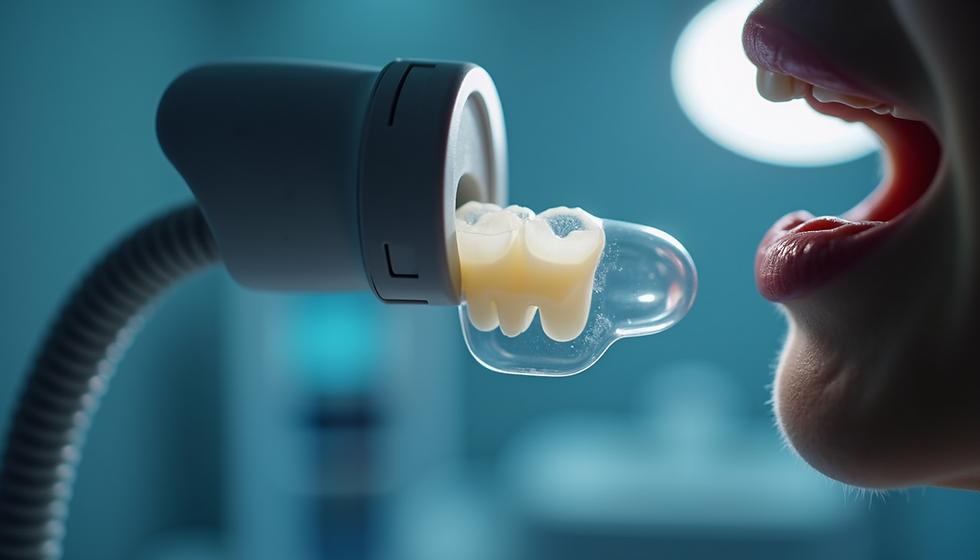CO₂ Laser for Esthetic Healing: A Dual Approach with Artificial Scab Formation and PBMT
- Raymond G. Lee

- Jun 21
- 2 min read
Based on a 2023 Review from Fukuoka Dental College, Japan
Hello everyone, this is Raymond Lee from Raymond’s Dental Solutions.
Today, I’d like to share highlights from a 2023 review published by Fukuoka Dental College in Japan, which explores the powerful synergy between two CO₂ laser techniques for esthetic healing of oral soft tissue injuries and surgical wounds.
The study combines both scientific insight and clinical outcomes to support the use of CO₂ lasers—especially in delicate areas with minor tissue loss—for optimized recovery. Two key mechanisms are at the heart of this approach:
1. Artificial Scab Formation with High-Intensity CO₂ Laser
Using high-intensity CO₂ laser energy, clinicians can create a carbonized, coagulated blood layer over the wound—referred to as an artificial scab. This layer acts like a biological dressing, promoting blood pooling and perfusion necessary for healing.
Key benefits include:
Moisture retention and infection prevention through wound sealing
Suppression of myofibroblast activity, which minimizes wound contraction and scarring
Improved esthetic outcomes due to reduced scar formation and smoother tissue healing
2. Photobiomodulation Therapy (PBMT) with Low-Level CO₂ Laser
Once the artificial scab is formed, low-intensity laser therapy is applied to influence cellular behavior during the healing phase.
This therapy:
Downregulates TGF-β1, a cytokine associated with fibrosis
Reduces myofibroblast presence, further limiting scar development
Accelerates re-epithelialization
Stimulates fibroblast activity and collagen production
The result? Smoother tissue texture, natural color blending, and greater elasticity—especially important in visible or esthetic zones.
3. Clinical Applications and Benefits
This dual laser strategy has shown great results in procedures such as:
Gingivoplasty
Mucosal biopsies
Fibroma removals
Advantages include:
High-precision ablation
Excellent bleeding control
Minimal thermal damage to surrounding tissues
Shorter recovery time with less discomfort and scarring than traditional methods
4. Takeaway
Combining artificial scab formation with photobiomodulation therapy offers a breakthrough in managing oral wounds—especially in esthetically critical areas like the lips, gingiva, and vestibular mucosa.
This method promotes:
Faster, more comfortable healing
Better cosmetic outcomes
Lower risk of complications
Thanks for tuning in. At Raymond’s Dental Solutions, your clinical excellence is my mission.
Let me know if you'd like a meta description, article excerpt, or LinkedIn version as well.







.png)

Comments